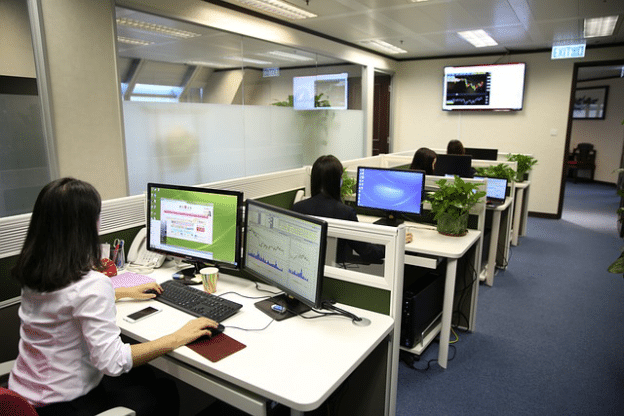In the bustling atmosphere of today’s office environments, the well-being of employees can often take a backseat to productivity and deadlines. However, neglecting workplace safety can lead to common office injuries that not only affect the health of employees but also impact the overall efficiency of an organization. Understanding and preventing these injuries is key to creating a safer, more conducive work environment that not only prioritizes the health of its workers but also boosts morale and productivity. This guide will explore practical steps and strategies that businesses can implement to mitigate risks and foster a culture of safety and awareness in the office.
Partnering with an Attorney
One proactive approach to safeguarding against potential legal complications and enhancing occupational safety involves collaborating with a knowledgeable workplace injury attorney. Such a partnership can offer invaluable insights into the complexities of workplace law, guidance on compliance with health and safety regulations, and strategies to minimize legal risks associated with workplace injuries. A workplace accident lawyer can also aid in developing comprehensive policies that protect the company and its employees, providing a framework for a healthier, more secure work environment. This collaboration not only demonstrates a company’s commitment to employee safety but also establishes a strong foundation for legal protection should injuries occur.
Ergonomic Workplace Design
To prevent the onset of musculoskeletal disorders, it is crucial to invest in ergonomic workplace design. This includes providing adjustable chairs, desks, and computer monitors that allow employees to work comfortably without straining their bodies. Additionally, ergonomic tools like keyboard trays and footrests can further enhance the workplace environment, allowing for a personalized setup that meets the individual needs of each employee. By investing in such ergonomic solutions, companies can significantly reduce the risk of back injuries, repetitive strain injuries, and carpal tunnel syndrome, which are particularly common in office settings where employees may spend prolonged periods seated.
Regular Breaks and Movement
Encouraging regular breaks throughout the workday is a simple yet effective strategy to greatly diminish the risk of office-related injuries. By advocating for short, frequent pauses that allow employees to stand up, stretch their limbs, or take a brief walk around the office, businesses can help alleviate muscle stiffness and improve blood circulation. This not only contributes to enhanced focus and productivity among staff but also fosters a healthier workplace environment. Establishing designated stretching zones within the office or implementing group stretch sessions at specific intervals can foster a culture of health and well-being. Additionally, encouraging desk-based employees to engage in light physical activities during these breaks can further enhance their physical and mental health. These small adjustments in daily routine contribute significantly to preventing overuse injuries and supporting overall employee well-being, making the workplace a healthier environment for everyone.
Proper Lifting Techniques
Office work, predominantly sedentary in nature, occasionally requires the lifting and moving of heavy objects. It is crucial to educate staff on proper lifting techniques to prevent injury. This involves bending at the knees, keeping the back straight, and lifting with the legs rather than the back. Encouraging a culture where employees feel comfortable asking for help when lifting heavy items can further prevent strain and injury. Additionally, offices should consider the use of mechanical aids, such as trolleys or lifts, whenever possible to facilitate the moving of heavy objects. Creating a working environment where safety is prioritized and employees feel supported in seeking assistance is key to maintaining a safe and healthy office space.
Eye Strain Prevention
With the increasing reliance on digital screens in the modern office environment, eye strain has become a frequent complaint among office workers. Implementing strategies such as the 20-20-20 rule—taking a break every 20 minutes to look at something 20 feet away for at least 20 seconds—can significantly mitigate the risk of eye strain. Ensuring that computer screens are positioned at an appropriate distance and angle can also play a crucial role in reducing eye fatigue. Furthermore, investing in screen filters that minimize glare or encouraging the use of anti-glare glasses can be beneficial in minimizing the effects of prolonged screen exposure. These measures can help in preserving employees’ vision health over the long term and contribute to a more comfortable and productive work environment.
Clutter-Free Workspaces
Maintaining a clutter-free workspace is pivotal in preventing common office accidents such as trips and falls. By encouraging regular organization and ensuring that walkways are clear of obstacles, businesses can drastically reduce the likelihood of these incidents. Encouraging employees to keep their work areas tidy not only contributes to a safer working environment but also promotes efficiency and a more pleasant office atmosphere. Implementing regular safety audits to identify and promptly address potential hazards can further enhance safety measures. Such proactive approaches ensure that all employees contribute to and benefit from a well-organized and accident-free workplace.
Stress Management Programs
The impact of stress and mental fatigue on an employee’s ability to work safely and efficiently cannot be overstated. High levels of stress can lead to a heightened risk of accidents and a decrease in productivity. Implementing stress management programs that include activities like mindfulness exercises, yoga sessions, or even short walking groups during breaks can offer significant benefits in managing workplace stress. Offering resources such as counseling services or workshops focused on stress management techniques can also provide crucial support to employees dealing with job-related pressures. By placing a focus on mental health and well-being, businesses can cultivate a more engaged, productive, and safe workforce, where employees feel valued and supported.
Emergency Preparedness
Ensuring that all employees are well-trained in emergency procedures is a critical aspect of workplace safety. This includes being familiar with fire exits, the location of first aid kits, and understanding how to effectively use them. Regular drills and training sessions can equip employees with the knowledge and confidence to respond swiftly and efficiently in the event of an emergency, potentially preventing injuries. Providing comprehensive training on a variety of potential scenarios, from natural disasters to security threats, can further strengthen a company’s readiness to face emergencies. A well-prepared workforce is an integral part of creating a safe and secure working environment for everyone.
In the quest for a safer, more productive workplace, the amalgamation of ergonomic design, regular movement, mindful lifting, eye strain prevention, clutter management, stress reduction, and emergency preparedness serves as an effective blueprint. By diligently applying these strategies, businesses can construct an environment that not only minimizes the risk of common office injuries but also elevates overall employee satisfaction and productivity. It underscores the principle that the well-being of employees is not separate from the success of the organization—it is central to it. A commitment to safety is a testament to valuing human capital, and fostering a culture of care that carries the potential to transform the workplace into a bastion of health, safety, and efficiency.


